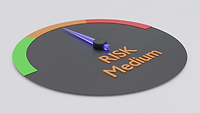Experts Call for Global Harmonization of Risk Assessment Methods for Food Contact Materials

Image credit: Freepik
Global food safety would benefit from the harmonization of risk assessment protocols used by different regulatory bodies, experts assert in a new review published in Trends in Food Science and Technology. The work behind the paper was coordinated by the Packaging Materials Task Force of International Life Sciences Institute Europe (ILSI Europe).
The paper examines the international regulatory differences regarding food contact materials (FCM) by comparing key aspects of FCM risk assessment in the U.S., EU, the South American Common Market (MERCOSUR), India, China, Japan, and Thailand. Although the overarching goal of ensuring that FCMs do not pose a threat to human health is consistent across regulatory bodies, differences in testing requirements, protocols, and assessment criteria can lead to inconsistencies in how risks are managed.
Work on the review was set into motion by a workshop organized by ILSI Europe in April 2024, which revealed that, while global harmonization of FCM regulations remains a long-term goal, achieving global acceptance of the underlying principles of safety assessments is a more immediate and achievable objective. Acknowledging this, ILSI Europe’s Packaging Materials Task Force convened an expert group of academics and industry leaders to review existing approaches.
Given that both the chemicals released by FCMs and routes of human exposure are consistent worldwide, the review emphasizes the need for greater harmonization in risk assessment requirements. Aligning regulatory approaches could improve efficiency, enhance consumer protection, and facilitate global trade.
The report highlights the criteria for risk assessment and food categories in the seven regions, and discusses hazard identification and characterization, exposure assessment, and risk characterization. It also describes the experimental data required for risk assessment (i.e., migration testing, simulants, toxicity criteria, etc.).
Areas in which harmonization is most feasible that are identified in the paper include:
- Food classifications and simulants
- Migration testing conditions (i.e., time and temperature)
- Analytical testing
- Adoption of universal allocation factors
- Exposure assessments using packaging usage factors modeled on the U.S. Food and Drug Administration’s (FDA’s) approach
- More realistic dietary exposure regarding the amount of food consumed by the population.
As an example, the paper suggests alignment of the choice of simulants (substitutes used to represent groups of foods) for migration studies as a first step toward harmonization, and proposes the following approach, specific to plastics:
- 10 percent ethanol for ordinary food (neutral pH; part of fat, proteins, sugar, and vegetables; and non-alcoholic)
- 4 percent acetic acid for acidic food
- 20 percent ethanol for alcoholic food
- 50 percent ethanol for food with fat content below 20 percent
- Vegetable oil or 95 percent ethanol or isooctane for food with fat content above 20 percent
- Modified polyphenylene oxide for ordinary dry food.
Although some areas of FCM risk assessment are closer to harmonization than others, with a gradual, step-by-step approach, the authors believe that harmonization of risk assessment methods is achievable.
Looking for a reprint of this article?
From high-res PDFs to custom plaques, order your copy today!






